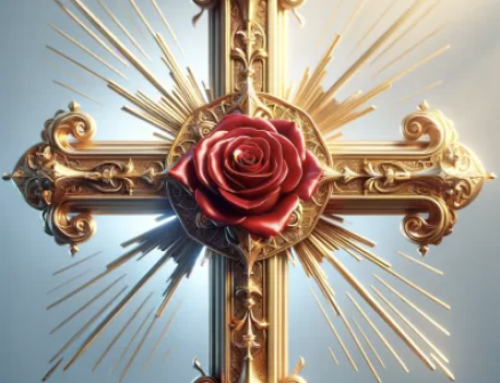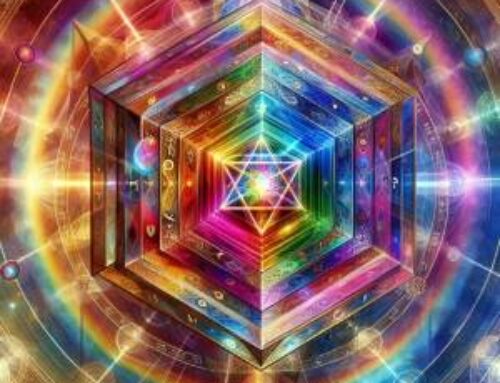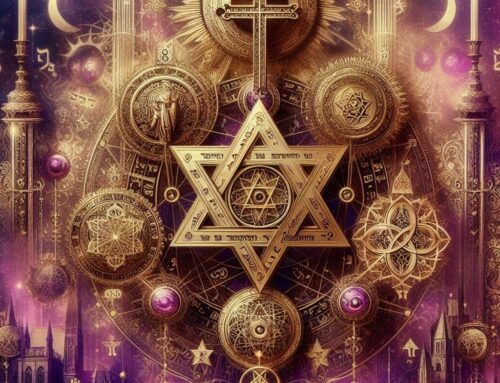Contents
- 1 Introduction to ‘Rosicrucian Tradition’
- 2 Historical Origins and Evolution of the Rosicrucian Tradition
- 3 Core Philosophies and Teachings
- 4 The Role of Symbolism in Rosicrucianism
- 5 Rituals and Practices for Spiritual Growth
- 6 The Rosicrucian Influence on Modern Esoteric Movements
- 7 Navigating the Path of Initiation
- 8 Conclusion of ‘Rosicrucian Tradition’
- 9 FAQ- Rosicrucian Tradition
- 10 References:
Introduction to ‘Rosicrucian Tradition’
The Rosicrucian tradition, known for its teachings, in symbols, alchemy and spiritual growth invites contemporary individuals on a profound journey beyond the physical realm towards inner enlightenment. Emerging from a fusion of wisdom beliefs and Christian mysticism the Rosicrucian Order has captivated scholars, truth seekers and spiritualists for generations with its allure of secret wisdom and personal metamorphosis. Within the realm of exploration the Rosicrucian path presents a blend of ceremonies, lessons and symbolic representations designed to uncover the universal laws and our interconnectedness, with it.

This tradition, while shrouded in secrecy and wrapped in the allure of mystery, extends an invitation to those willing to embark on a quest for truth and light. It is not merely an academic study but a living practice that integrates deeply personal and transformative experiences. Through the ages, the Rosicrucian teachings have adapted, absorbing insights from various mystical traditions, yet always emphasizing the inner development of the individual and the pursuit of wisdom.
At the heart of the Rosicrucian tradition lies the conviction that beyond the physical world’s limitations, a richer, more profound reality awaits discovery. This reality, accessible through the elevation of consciousness and the refinement of the soul, offers insights into the nature of being, the workings of the cosmos, and the interconnectedness of all life. The Rosicrucians hold that through disciplined study, contemplative practices, and the application of universal principles, one can peel away the layers of ignorance and illusion, revealing the luminous core of one’s true self.
This community of light has existed since the first day of the creation of the world, and its duration will be until the last day of time (1).
Historical Origins and Evolution of the Rosicrucian Tradition
The tradition of Rosicrucianism, with its teachings transformative alchemical practices and hidden esoteric knowledge serves as a guiding light for those on a quest, for spiritual awakening. Delving into the realms of history, philosophy and symbolism uncovers the layers of a tradition that has shaped beliefs over many generations.
1. Foundational Manuscripts and Early Beginnings
In the century the Rosicrucian tradition took shape with the release of two significant works; the “Fama Fraternitatis” and the “Confessio Fraternitatis.” These writings set the stage for a movement that aimed to blend wisdom with emerging scientific understanding envisioning a united community committed to uplifting humanity spiritually and intellectually. This period marked the beginning of a tradition that would develop over time adapting to changing currents while staying true, to its pursuit of enlightenment.
2. Evolution Through the Centuries
Over the centuries, the Rosicrucian tradition has exhibited a remarkable capacity for adaptation and growth, absorbing insights from various mystical traditions and responding to the challenges of different historical epochs. From its shadowy origins in medieval Europe to its influence on the Enlightenment and beyond, the tradition has been shaped by a confluence of philosophical, religious, and cultural influences that have enriched its teachings and expanded its appeal. This evolution reflects the dynamic nature of the Rosicrucian path, which remains vibrant and relevant in the contemporary spiritual landscape.
3. Diverse Currents and Influences
The term “Rosicrucian” has been adopted by various societies and orders, each interpreting the core principles of the tradition according to their unique perspectives and aims. This diversity reflects the rich tapestry of the Rosicrucian heritage, encompassing a wide range of practices, from alchemy and Hermetic philosophy to Christian mysticism and Kabbalistic studies. The interaction among these currents has fostered a richly layered tradition that defies simplistic categorization, offering a multiplicity of paths towards spiritual wisdom.
4. Alchemy as Spiritual Transformation
At the heart of the Rosicrucian tradition lies the practice of alchemy, not merely as the pursuit of material transmutation but as a metaphor for spiritual transformation. The alchemical journey, symbolized by the quest for the Philosopher’s Stone, mirrors the inner transformation of the seeker from base, unrefined consciousness to a state of spiritual enlightenment and perfection. This allegorical interpretation of alchemy encapsulates the essence of the Rosicrucian path: the transmutation of the soul towards its highest potential.
The true alchemist does not turn lead into gold; he turns the world into words.” (Book IX: On Thought and Sense) – A metaphorical interpretation of alchemy, emphasizing the transformation of perception (2).
Core Philosophies and Teachings
The fundamental beliefs and principles of the tradition delve into the enigmas of life combining metaphysical wisdom with practical guidance. Exploring these core tenets uncovers a perspective, on the universe, spirituality and ones own identity.
1. The Primacy of Spiritual Initiation
Spiritual initiation stands at the core of the Rosicrucian tradition, serving as the gateway to deeper levels of understanding and transformation. This initiatory process is not merely a ceremonial rite but a profound experience that connects the seeker to the ancient wisdom and spiritual currents of the tradition. It underscores the belief that true spiritual knowledge cannot be acquired through intellectual study alone but requires a direct, experiential engagement with the mysteries.
Magic initiation constitutes a true royalty; because also the great art of the magi is characterized by all adepts as the Royal Art, as the Holy Kingdom — Sanctum Regnum (3).
2. The Integration of Science and Spirituality
The Rosicrucian teachings advocate for a harmonious integration of science and spirituality, reflecting the tradition’s origins in a time when these domains were not seen as separate. This approach is rooted in the conviction that the exploration of the natural world, through the lens of science, can yield insights into spiritual truths, and vice versa. This holistic perspective encourages a balanced development of both the intellect and the spirit, promoting a comprehensive understanding of the universe and our place within it.
3. The Path of Self-Mastery and Transformation
Central to the Rosicrucian philosophy is the concept of self-mastery, the disciplined cultivation of the self towards achieving a state of harmony, balance, and enlightenment. This path involves rigorous self-examination, the practice of virtues, and the application of spiritual principles in daily life. Through this process of self-transformation, the seeker aspires to align their thoughts, emotions, and actions with higher spiritual ideals, embodying the wisdom and light of the Rosicrucian teachings.
4. Universal Brotherhood and Service
The ideal of universal brotherhood permeates the Rosicrucian teachings, emphasizing the interconnectedness of all beings and the shared journey towards enlightenment. This principle manifests in a commitment to service, compassion, and the upliftment of humanity. Rosicrucians are encouraged to contribute to the greater good, fostering a spirit of unity, understanding, and love among all people. This vision of universal brotherhood reflects the tradition’s ultimate goal: the realization of a harmonious world enlightened by spiritual wisdom.
The Role of Symbolism in Rosicrucianism
Symbolic Foundations
The tradition of Rosicrucianism is rich, in symbols that hold meanings beyond their surface imagery. Take, for example the Rose Cross symbol, an element in philosophy. It symbolizes the souls journey through the intertwined realms of the spiritual spheres. The rose signifies the expansion of consciousness blossoming into enlightenment while the cross represents the challenges and opportunities for growth on the plane. Like symbols in Rosicrucian teachings this emblem serves as a tool for meditation guiding practitioners, towards inner awakening and a deeper comprehension of universal harmony.
Meditative Practices
Rosicrucian meditative practices leverage symbols as focal points for deep spiritual exploration. Practitioners are taught to visualize these symbols, diving into their esoteric meanings, which facilitates a profound connection with the higher self and the divine. This contemplative engagement with symbols is not a passive act but an active journey into the psyche, unlocking layers of wisdom encoded within each symbol. Through regular meditation on symbols such as the pentagram or the Rose Cross, initiates experience a transformation of consciousness, aligning more closely with universal truths .
Symbolism and Alchemy
Alchemy plays a pivotal role in Rosicrucianism, with its symbolism representing the spiritual alchemy of the human soul. The process of turning lead into gold is an allegory for the soul’s journey from a state of ignorance to enlightenment. Alchemical symbols, rich in Rosicrucian texts, provide a roadmap for this transformation, depicting the stages of purification, dissolution, and rebirth. Initiates, through meditation and ritual, engage with these symbols, undertaking their own alchemical transmutation towards spiritual gold – a state of divine consciousness .
Universal Connections
The universal laws, such as the principle of vibration or the law of polarity, are deeply embedded in Rosicrucian symbols. These laws reflect the harmony and interconnectedness of the cosmos, offering insights into the nature of reality and the human experience within it. Through the study and contemplation of symbols embodying these laws, Rosicrucians attain a greater understanding of their place in the universe. This knowledge empowers them to live in harmony with cosmic rhythms, facilitating personal and spiritual growth.
God is the all-working; He is the effect of Nature, working for the perfecting of the Universe.” (Book II: To Asclepius) – Suggesting the alchemical work as part of the divine plan for perfection (4).
Rituals and Practices for Spiritual Growth
Meditation and Contemplation
In the heart of Rosicrucian spiritual tradition lie rituals, meditation and reflection. These traditions act as doorways, to heightened consciousness. Play a role in the spiritual growth of those who embark on this path. Meditation enables individuals to enhance their focus calm their thoughts and delve into layers of awareness. On the hand contemplation facilitates the assimilation of insights into everyday life turning abstract ideas into practical wisdom. These practices go beyond tranquility; they serve as instruments for self exploration and connection, with the divine.
Visualization Techniques
Visualization is a powerful technique in the Rosicrucian arsenal, used for manifesting both spiritual and material goals. Initiates are taught to create vivid mental images of their desires, imbuing them with the energy of intention. This practice is based on the principle that the mind can influence reality, a concept that finds support in both ancient wisdom and modern quantum physics. By visualizing positive outcomes, practitioners align their vibrational frequency with that of their goals, facilitating their manifestation in the physical world .
Ritual Significance
Rituals in Rosicrucianism are symbolic acts performed with the intention of connecting with higher spiritual energies. These rituals are carefully designed to align with cosmic laws and principles, creating a harmonious flow of divine energy. Through rituals, practitioners consecrate space, time, and consciousness, creating a sacred environment for spiritual work. This engagement with ritual deepens the initiate’s connection to the universal mind, enabling transformative experiences and insights
Practical Alchemy
The application of alchemical principles in daily life is a hallmark of Rosicrucian practice (5). Initiates view their personal development as an alchemical process, involving the purification and transformation of their lower nature into a higher, spiritual state. This practical alchemy extends to relationships, work, and creativity, where the principles of transmutation are applied to overcome challenges and foster growth. Through this holistic approach, Rosicrucians strive to embody the alchemical maxim of “as above, so below,” living in harmony with spiritual truths .
The Rosicrucian Influence on Modern Esoteric Movements
The complex network of Rosicrucianisms impact extends through day mystical movements weaving its deep heritage into the fabric of todays spiritual quest. Its lessons highlighting the blend of encounters, wisdom and a deep grasp of natural principles have greatly influenced the direction of contemporary spirituality.
Interplay with Science and Mysticism
Rosicrucianism’s unique position at the confluence of science and mysticism has fostered an approach to spiritual inquiry that values both empirical investigation and intuitive insight. This perspective has encouraged a dialogue between seemingly disparate domains, suggesting a holistic model of understanding that transcends the limitations of materialist science and opens new avenues for exploring the mysteries of existence.
Embarking on the path of initiation involves a journey that unfolds in stages revealing deeper understandings of oneself and the world. This transformative experience aims to unlock the potential of individuals paving the way, for enlightenment and a meaningful bond, with the divine.
Stages of Initiation
The initiation phases within Rosicrucianism act as markers, along the path signifying the individuals advancement through the study of mystical doctrines the enhancement of inner abilities and the integration of esoteric concepts into everyday experiences. These phases go beyond rituals; they symbolize changes, in awareness and comprehension.
Challenges and Growth
The initiatory journey is replete with challenges that test the seeker’s commitment, resilience, and capacity for self-transformation. These trials, whether internal struggles or external obstacles, are integral to the process of spiritual growth, forcing the initiate to confront their limitations and transcend them.
The Mentor’s Role
Guidance from experienced mentors is invaluable on the initiatory path, providing direction, support, and wisdom to navigate the complexities of the spiritual journey. These mentors, who have themselves traversed the path, act as beacons of light, guiding the initiate towards the realization of their highest potential.
Living the Teachings
The culmination of the Rosicrucian path of initiation is the embodiment of the teachings in the initiate’s life, reflecting the principles of love, wisdom, and harmony in their actions and interactions. This lived expression of spiritual truths signifies the true attainment of initiation, where the practitioner becomes a vessel of divine light in the world.
Initiatory Tools
Rosicrucianism transcends the conventional means of spiritual teaching found in workshops or lectures; it is inherently an initiatory path, deeply rooted in the mysteries of personal transformation and enlightenment.
Those who advocate for an open-source approach to its teachings, proposing to lay bare its secrets for all, likely have not undergone initiation within an authentic Rosicrucian order. Such orders guard and preserve the tradition’s most potent tools for spiritual evolution and mastery over life. These tools, refined through centuries of wisdom and practice, are imparted to initiates in a manner that honors the sanctity and integrity of the path. This ensures that the profound transformative power of Rosicrucian practices remains true to its origins, offering a genuine conduit for the seeker’s journey towards enlightenment and the mastery of life’s multifaceted challenges.
Conclusion of ‘Rosicrucian Tradition’
The ancient wisdom of the tradition deeply intertwined with Hermetic philosophy offers a transformative and enlightening journey. By delving into its origins, fundamental beliefs and the significant role of symbolism, in this path it becomes clear that Rosicrucianism is more than just a set of teachings or rituals—it is a dynamic route, towards spiritual awakening. It encourages individuals to delve into their selves unravel the mysteries of the universe and harmonize with the laws that shape our existence.
This custom highlights the significance of initiation viewing it not as a ritual but as a journey of spiritual awakening and growth. By facing and overcoming the obstacles and tests, along this path individuals are shaped into bearers of knowledge living out these teachings in their everyday experiences. The mentors and advisors within the community hold a position providing guidance and encouragement to aspirants as they navigate their personal quests, for spiritual enlightenment.
Rosicrucianism’s influence on modern esoteric movements underscores its relevance and enduring appeal. Its principles have woven through the fabric of contemporary spiritual exploration, enriching the practices of those who seek to traverse the boundaries of the known and venture into the realm of the mystical.
Invitation to Explore the Authentic Rosicrucian Tradition
For those drawn to the mysteries of life and the quest for spiritual growth, the Rosicrucian tradition offers a path rich in wisdom and transformative potential (6). We invite you to engage with the practices with the Hermetic Academy, and consider the path of initiation. Let the journey of self-discovery, mastery, and enlightenment begin.
FAQ- Rosicrucian Tradition
1. What is the essence of the Rosicrucian tradition?
A: The Rosicrucian tradition is a deeply initiatory path rooted in ancient wisdom, focusing on spiritual evolution, mastery over life, and the transformation of the self through esoteric knowledge and practices. It is characterized by its adherence to the principles of Hermetic philosophy, alchemy, and the mystical journey towards enlightenment.
2. Can anyone access Rosicrucian teachings?
A: While there is a wide interest in making spiritual teachings broadly available, the true depth of Rosicrucian tradition is preserved within authentic initiatory Rosicrucian orders. These orders maintain that genuine initiation and the transmission of their most powerful tools for spiritual development are accessible only through a structured, initiatory path.
3. How does Rosicrucianism differ from other spiritual paths?
A: Rosicrucianism stands out for its method of advancement and enlightenment highlighting the importance of initiation the influence of alchemy and the significance of esoteric symbols, in individual growth. In contrast to traditions that may present teachings openly or through exploration Rosicrucianism maintains that genuine comprehension arises from personal experience and initiation, into its enigmatic practices.
4. What is the significance of Rosicrucian symbols?
A: Symbols in Rosicrucianism are not merely illustrative but are keys to unlocking deeper esoteric truths. They serve as tools for meditation, gateways to spiritual insight, and aids in the practitioner’s journey towards enlightenment. Through the contemplation and understanding of these symbols, initiates can access higher states of consciousness and align more closely with universal principles.
5. Is Rosicrucianism compatible with modern life?
A: Yes, the principles and practices of Rosicrucianism are designed to be integrated into daily life, providing a framework for navigating contemporary challenges with wisdom, balance, and spiritual insight. The tradition teaches that mastery over life and spiritual evolution are achievable through the application of its teachings in the practitioner’s personal and professional life, making it a deeply relevant path for modern seekers.
References:
(1) Eckartshausen, Karl von. (1802). Die Wolke über dem Heiligtum. München.
(2) Ficino, M. (1471). Corpus Hermeticum. Florenz
(3) Eliphas, L. (1854). Dogme et Rituel de la Haute Magie. Paris.
(4) Ficino, M. (1471). Corpus Hermeticum. Florenz
(5) Rubenstein, E. (2023). Alchemy: Secrets of Consciousness Transformation. Hermetic World, Paphos.
(6) Rubenstein, E. (2023). Magic: The Legacy of the Rosicrucians. Hermetic World, Paphos.





